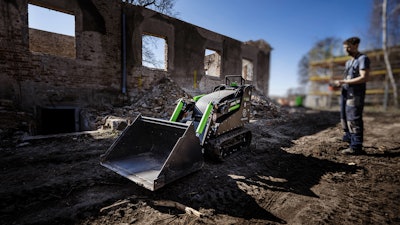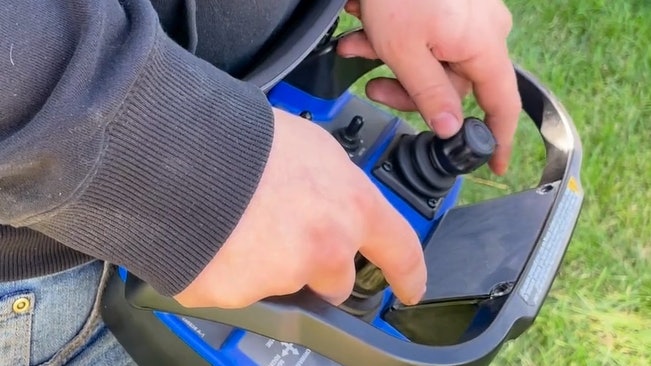As contractors manage challenges in skilled labor, many have gone towards technology and machines to find higher productivity and efficiency at the jobsite. While earthmoving equipment like compact track loaders and excavators offer cabs for operator comfort and safety, machines for the concrete contractor commonly have the operator riding on top or walking behind.
It’s now common to see wireless remote-controlled operation for operators. This option provides increased safety, productivity, and precision in the work at hand.
Safety
Logan Wojcik, product development specialist at Ligchine, says that remote operation makes the job safer. Remote-controlled equipment such as demolition robots, laser screeds, and remote-controlled electric loaders (to name a few), allows operators to position themselves a safe distance from active construction and demolition, reducing risk of injury from flying or falling debris. Remote operation also eliminates exposure to the stain and vibrations from using handheld tools and the risks of being inside a cab when something goes wrong. The majority of Ligchine’s laser-guided screeds feature wireless remote operation.
Wojcik agrees: “[With remote operation] you disassociate the human from the heavy piece of equipment. You have more visibility when you move around, and you send the machine into an unsafe area rather than a human.”
Regular safety precautions are in place for this type (and all) of equipment, reminds Wojcik. “Make sure there are no kids playing around the jobsite and that the site is set up for autonomous work,” he says.
Productivity
Machines that have a remote-controlled capability can also increase the productivity of your team exponentially when compared with handheld tools. Much like the workhorses of skid-steers and excavators, contractors can pair several different attachments as needed to demolition robots – giving operators the opportunity to do multiple jobs with a single machine. The variety of attachments available for today’s demolition robots and loaders make these machines versatile workhorses.
As an example, Keeling tells us of a sawing and demolition contractor that was able to reduce the removal time by more than half by adding remote-controlled equipment to the jobsite. “He was also able to drastically improve their safety rating, making it the best possible experience modification rate for a construction company of their size,” he adds.
Timing is everything in concrete. It’s no different here. There’s a chance that remotely operated robotics may help operators too productive, putting them too far ahead of pace for the following cleanup crew. That machine then sits idle. Of course, a well-organized cleanup process makes this a moot point. There’s still a benefit from the found speed. Keeling points out there are also remote-controlled options for cleanup which also positions the operator outside the ‘danger zone’ during operation.  The Mini Z mini-compact track loader from FIRSTGREEN. Brokk announced they would be the U.S. distributor for FIRSTGREEN in January 2025.FIRSTGREEN
The Mini Z mini-compact track loader from FIRSTGREEN. Brokk announced they would be the U.S. distributor for FIRSTGREEN in January 2025.FIRSTGREEN
Precision
Autonomous technology can also increase precision, produce less waste, and help minimize human error – not to mention be a significant aid in achieving higher floor flatness and levelness numbers. While an operator using the remote control for the first time will likely have a bit of a learning curve, the equipment should be safe and usable as soon as possible right from the start. Many pick it up quickly with training and practice. It’s recommended to contact the manufacturer or check on their official website and YouTube channels to see if there are any official training videos online or a program available.
Advanced with the technology are also improving easy of use, says Keeling. For example, Brokk’s line up SmartPower+ machines were designed to have more durability and reliability. The line’s technology were advanced in terms of presents, data processing, sensors, and more. Brokk’s control box even got lighter for better ergonomics. “The overall effect is a machine that is easier than ever to operate,” he says.
Contractors should consider security and what systems may be in the surrounding environment – some jobsites may not allow wireless remote control operations for security reasons. The wireless transmission could interfere with places like airports or government bases or buildings. In those situations, it’s likely that contractors would be able to operate the machine with a wired connection instead.
View the original article and our Inspiration here


Leave a Reply